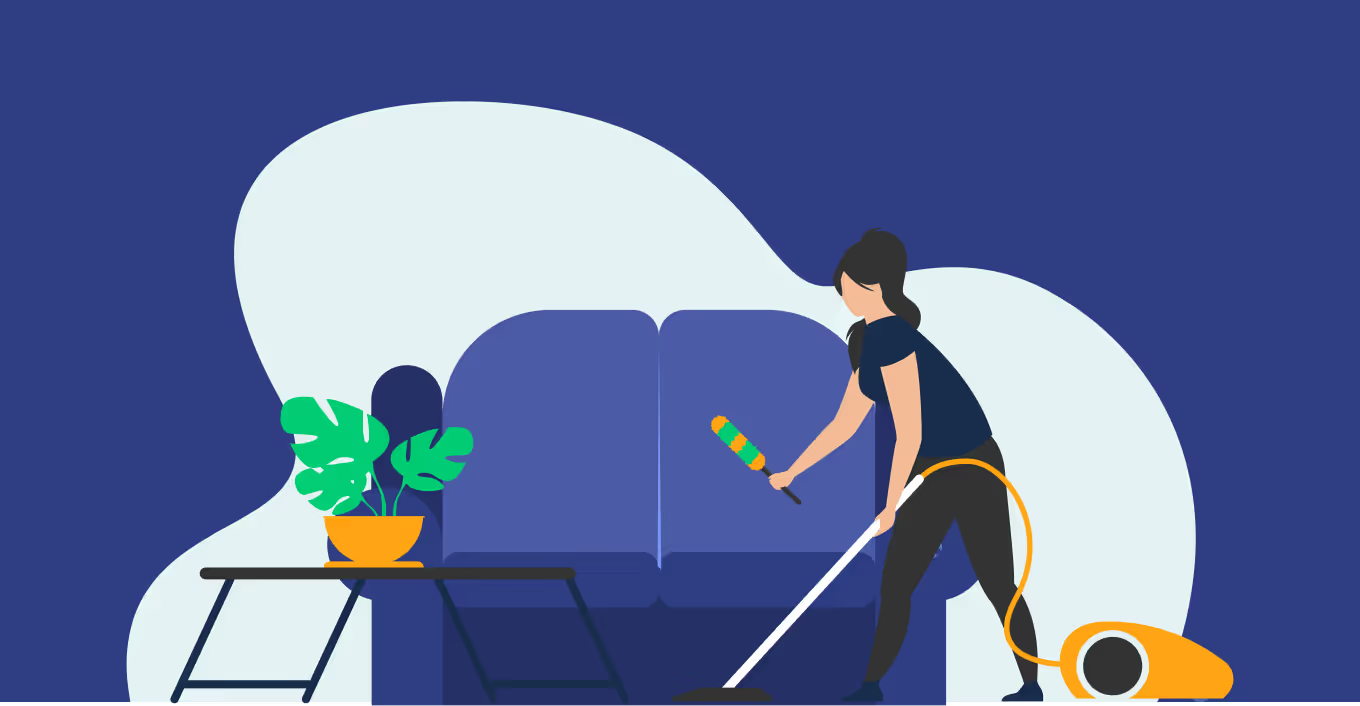Sanitizing rental properties may seem like a long and complicated task.
If the property owner does it themselves, it will take quite some time to get done. If they hire someone else, it could cost quite a lot of money.
That is why a lot of property owners are starting to use UV-C light to sanitize their properties.
Not sure how a UV-C disinfection system can help you?
Look no further.
In this guide, we will be discussing all the pros and cons of using UV-C systems in your rental properties. To begin, let's explain what UV-C light is and how it works.

What Is UV-C Light Disinfection?
UV-C stands for ultraviolet C. Ultraviolet C consists of all the ultraviolet light (UV light) that has wavelengths between 200nm and 290nm on the electromagnetic spectrum. These wavelengths of light are known as germicidal UV. This means that exposure to the light deactivates the DNA of bacteria.
This is the basis of UV-C sanitation and the way it works. Below, we will be going more in-depth into how this light manages to sanitize properties.
How It Works
As mentioned before, UV-C light carries ultraviolet light of a very short wavelength. This UV energy is necessary to inactivate microorganisms and follows a certain set of steps. These steps include:
- UV-C energy from the UV-C lamps is absorbed into the DNA and RNA of the cell
- The UV-C lighting damages the nucleic acids and disrupts the cell's DNA
- The cell is then completely neutralized
- The cell cannot perform basic functions and cannot reproduce
And, when the cell cannot reproduce, that means that the cell cannot contribute to the further spread of infections or disease. Before going through this decontamination process, however, the light must reach the area for surface disinfection. Below, we will discuss how this light is applied and how it travels.
How Is UV-C Light Applied
There are various ways that UV-C light can be applied. There are two main areas that UV-C light sanitizes, which are surfaces and the air. This light is typically distributed in the form of a light or a lamp. Below, we will briefly explain the two most common applications of UV-C light in a property.
Surface Treatment
Surface treatment refers to the treatment of surfaces like computer keyboards, phones, and workstations. All of these surfaces are commonly used and should be sanitized regularly. To use UV-C light on surfaces, a small, desktop lamp can be installed that can quickly disinfect surfaces with a visible light that shines over the surfaces. Some devices even do this automatically.
Air Treatment
Especially in the past few years, the control of airborne pathogens has never been more important. Luckily, UV-C light can also be used to neutralize bacteria, viruses, and pathogens in the air. The HVAC units have their own, specialized UV-C treatment systems that essentially make air conditioning responsible for sanitizing the air.
So, now that we know more about some of the applications of UV-C light, let's learn about how different technologies stack up against each other when it comes to UV-C light.
LED vs. Bulbs
One of the main discussions when it comes to UV-C light is whether bulbs are better than LEDs. And, although they serve the same purpose, UV-C LED lights are significantly more effective than light bulbs.
The main reason for this is that LEDs do not contain mercury. UV-C light was traditionally in the form of mercury lamps, which was very hazardous to humans. On the other hand, LEDs do not contain any dangerous toxins and are therefore safe for humans to use. LEDs also have a much higher power output which leaves a smaller carbon footprint. On top of that, LEDs even last longer than traditional bulbs.
So, there is really no questioning the effectiveness of LED lights. But, what are the benefits of UV-C light disinfection compared to other methods?
Below, we will be outlining some of the most important benefits, and drawbacks, of UV-C lights.

The Pros Of UV-C Light Disinfection
As mentioned throughout the article, UV-C light can have a lot of benefits when it comes to rental properties. However, we have not really gone into detail on all of them. Below, we have outlined the most important benefits of using UV-C disinfection on your rental properties.
High Disinfection Rate
The first, and possibly most important, pro is that UV-C lights have a high disinfection rate. This means that they will disinfect a high percentage of what they are supposed to disinfect. In many studies, it has been found that UV-C disinfection led to a 99.9% eradication of foreign invaders. This is partly why these disinfection systems are widely used in healthcare facilities and to disinfect frequently touched surfaces.
Low Operating Cost
Another very important benefit of UV-C light disinfection is that the operating costs are very low. Since most lamps are powered by normal electrical outlets, only a small difference in the electricity bill will be noticed. However, the expensive part comes with the initial investment. Buying a UV lamp can cost from a few hundred dollars all the way up to a few thousand. This price depends entirely on the kind of commercial settings where it is going to be used.
Easy To Understand
Another nice benefit of using UV-C lights to disinfect rental properties is that they are easy to understand. What this means is that, to disinfect an area or some surfaces, you just have to plug in the lamp and point it in the right direction. This is by far the simplest way to guarantee a certain level of disinfection in your rental properties.
Now, as with all good things, there are some drawbacks. In the next section, we will be going over some of the cons of using UV-C light.

The Cons Of UV-C Light Disinfection
Although UV-C light disinfection may seem perfect, there are some notable drawbacks to consider. Below, we have outlined some of the drawbacks to using these lights.
Only Works On Surfaces In Field Of View
One of the main drawbacks of using UV-C lighting to disinfect properties is that it only works within a field of view. This means that anything that is covered from the light will not get disinfected. This can be resolved by strategically placing lamps to make sure that they each get as much coverage as possible.
Effectiveness Diminishes With Distance
Another drawback is that the effectiveness of the lights diminishes with the distance. This is because the strength of the light decreases as it moves further from the source. So, for example, if the light is at 100% power at 2 feet away from the source, it will be at 25% power at 4 feet. Again, this should be considered when setting up the lamps to cover as much area as possible.
Can Be Dangerous To Humans
Finally, if used incorrectly, UV-C light can actually be dangerous to humans. As mentioned before, the traditional UV-C lights have mercury inside of them, which can be very harmful. To solve this issue, it is recommended that users go with LED UV-C lights instead. These LEDs are much safer and are actually more effective as well.
We have now gone over the basics of UV-C, all of the benefits, and the drawbacks. But, we still don't know how to use the actual devices. In the next section, we will be giving a brief guide to help set up your UV-C system.

How To Use UV-C Light To Decontaminate Your Property
Below, we have provided a simple guide to setting up your UV-C lighting system.
1. Determine Size Of Area
The first step in setting up your UV-C system is determining the area that needs to be covered. For rental properties, owners are going to want to decide how much of the home they want to have sanitized at one time. It is important to take measurements of the whole room and consider any shadows that could influence the light output from the lamp.
2. How Long Do You Have
Next, you are going to want to determine how quickly you want the area to be sanitized. There may be a certain schedule that needs to be followed where the sanitization does not interfere with other activities. It is important to determine how much time is available because, if you want the process to go by faster, more lamps are going to be needed.
3. Set Up The Lights
The last step is to set up the lights. The light range will typically spread around 60 degrees from the source. When setting up the lights, it is important to also remember that the power diminishes with the distance. So, with that in mind, it is important to keep the lamps as close as possible to the desired destination. If the lamp does not reach enough, it may be time to invest in more lamps.
































.svg)
.svg)

